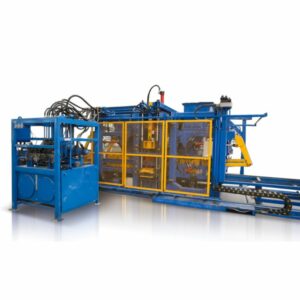Maintaining a block making machinery is crucial to ensure its long-term performance and avoid breakdowns.
Here are some tips for maintaining a block making machinery:
- Follow the manufacturer’s maintenance guidelines: The manufacturer’s guidelines provide the best advice on maintaining the machinery. Follow the guidelines and recommendations to keep the machine running efficiently.
- Clean the machine regularly: Dust and debris can accumulate in the machinery, causing it to malfunction. Clean the machinery regularly to prevent the accumulation of debris.
- Inspect the machine before each use: Before starting the machinery, inspect it for any signs of wear and tear. Look for any loose or broken parts that may need repair or replacement.
- Lubricate the moving parts: The moving parts of the machinery need to be lubricated regularly to keep them running smoothly. Use the recommended lubricant for each part.
- Replace worn out parts: Over time, China block making machinery parts of the machinery may wear out or break. Replace these parts promptly to prevent further damage to the machine.
- Keep the machine in a dry, well-ventilated area: Moisture can cause rust and corrosion, which can damage the machinery. Keep the machine in a dry, well-ventilated area to prevent rust and corrosion.
- Train your staff: Train your staff on how to properly use and maintain the machinery. This will help prevent breakdowns and ensure that the machinery is operating efficiently.
By following these tips, you can help maintain your block making machinery and ensure its long-term performance.
How block making machinery Are Made?
Block making machinery is typically made using a combination of metal, electrical components, and hydraulic systems.
The manufacturing process can vary depending on the specific type of machinery, but here is a general overview of how block making machinery is made:
- Design and engineering: Engineers and designers create a blueprint and specifications for the machinery, including the size, shape, and function.
- Fabrication: The metal components of the machinery are fabricated, including the frame, mold, and other parts. The metal is cut, bent, and welded together to create the required shape.
- Electrical components: The electrical components of the machinery are assembled, including the motors, switches, and other control systems.
- Hydraulic systems: The hydraulic system is installed, including the pumps, hoses, and valves.
- Assembly: The different components of the machinery are assembled together, including the metal frame, electrical components, and hydraulic systems.
- Testing: The machinery is tested to ensure that it is operating correctly and that all the components are working together properly.
- Final inspection: A final inspection is conducted to ensure that the machinery meets all the required standards and specifications.
Once the machinery has been manufactured and inspected, it is ready for shipping to customers who use it to produce concrete blocks and other types of building materials. The manufacturing process is typically done by specialized companies that have the expertise and equipment to create high-quality block making machinery.

Comments